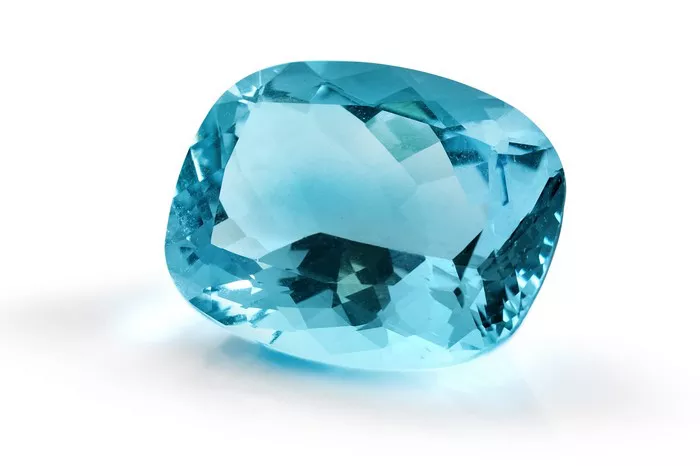When it comes to selecting gemstones for jewelry, design, and aesthetics often take center stage. However, an essential aspect of choosing gemstones that is frequently overlooked is their compatibility. The interaction between different gemstones can impact not only their appearance but also their durability and overall effectiveness. In this article, we will explore the reasons why certain gemstones should not be paired together, focusing on factors such as chemical interactions, physical hardness, and metaphysical beliefs.
Chemical Interactions and Reactions
One of the primary concerns when pairing gemstones is the potential for chemical reactions. Different gemstones have unique chemical compositions, and some elements or compounds can react negatively when in contact with each other.
For instance, emeralds and diamonds are two gems that are often avoided together due to their differing chemical properties. Emeralds contain chromium or vanadium, which can be sensitive to acids. Diamonds, being made of carbon, are not inherently reactive, but if emeralds are exposed to cleaning agents or chemicals used in diamond care, the emerald’s surface could become damaged or lose its brilliance. Therefore, combining these two gemstones in a setting where they are frequently exposed to cleaning agents is not advisable.
Similarly, turquoise and malachite should be kept apart. Turquoise is a porous gemstone that can absorb oils and acids, whereas malachite contains copper compounds that can react with such substances. When turquoise and malachite are combined, the turquoise may become discolored or degraded due to the reactive nature of malachite’s copper.
Physical Hardness and Durability
The hardness of gemstones is another critical factor in their compatibility. The Mohs scale of mineral hardness measures the scratch resistance of minerals, ranging from 1 (talc) to 10 (diamond). Gemstones with differing hardness levels can potentially scratch or damage each other when worn together.
For example, sapphire (with a hardness of 9) and opal (with a hardness of 5.5 to 6) should be avoided in combination. The sapphire’s higher hardness makes it likely to scratch the opal, which is significantly softer and more susceptible to surface damage. This can lead to a loss of luster and overall deterioration of the opal over time.
Another example is ruby and pearl. Rubies have a hardness of 9, while pearls have a much lower hardness, around 2.5 to 4.5. Pearls are also much more susceptible to scratching and abrasion. Wearing a pearl and ruby together, especially in a setting where they come into frequent contact, can lead to the pearl being scratched or damaged by the ruby.
Thermal Stability and Reactions
Temperature changes can affect gemstones differently, and some gemstones can be more susceptible to thermal shock. Topaz, for instance, is known for its good thermal stability, while amethyst can be more sensitive to heat. Pairing these two stones in a piece of jewelry that is likely to experience temperature fluctuations, such as rings worn daily, might not be ideal.
Moonstone and sunstone present another example of thermal instability concerns. Moonstone, with its delicate play-of-color effect, can be sensitive to sudden temperature changes, while sunstone, with its glittering aventurescence, can be more robust but still susceptible to thermal shock. Combining these two stones in a single piece of jewelry that may experience heat fluctuations could lead to damage or altered appearance.
Metaphysical Beliefs and Symbolism
In addition to physical and chemical considerations, gemstones are often associated with various metaphysical properties and symbolic meanings. Pairing gemstones with conflicting or incompatible energies can be an issue for those who believe in their spiritual properties.
Amethyst is commonly associated with calmness and spiritual growth, while citrine is linked to energy and prosperity. Combining these two stones might not align with their respective energies according to some metaphysical beliefs. The contrasting energies might dilute or interfere with the individual properties attributed to each stone.
Another example is the combination of black tourmaline and rose quartz. Black tourmaline is believed to provide protection and grounding, while rose quartz is associated with love and emotional healing. The intense grounding energy of black tourmaline might be considered too overpowering or conflicting with the gentle, nurturing properties of rose quartz.
Design and Aesthetic Considerations
From a design perspective, some gemstones simply do not work well together due to their colors, transparencies, and reflections. Pairing red garnet with peridot, for instance, might result in a clash of colors where the rich red of the garnet overpowers the vibrant green of the peridot. Similarly, combining blue sapphire with yellow topaz might create a color contrast that some find jarring rather than harmonious.Another consideration is the clarity and transparency of the gemstones. Combining a transparent stone like aquamarine with an opaque stone like lapis lazuli can lead to visual imbalance. The light and airy quality of aquamarine may not complement the deep, opaque nature of lapis lazuli, leading to a less cohesive overall design.
See Also: How to Identify Genuine Garnet Gemstones?
Practical Applications and Settings
When designing jewelry, practical considerations must also be taken into account. Certain gemstones are better suited to specific types of settings or jewelry pieces. Emeralds, with their inclusions and delicate nature, may not be ideal for daily wear rings. Combining them with more durable stones like diamonds in a high-contact area could lead to accelerated wear and tear.
Similarly, opals are sensitive to moisture and temperature changes, making them unsuitable for settings where they will be exposed to harsh conditions. Combining opals with more durable gemstones in such settings might not be practical, as the opal’s delicate nature can be compromised.
Conclusion
When selecting gemstones, it is crucial to consider their compatibility on multiple levels: chemical interactions, physical hardness, thermal stability, metaphysical properties, and design aesthetics. By understanding these factors, you can make more informed choices that ensure both the beauty and durability of your gemstone jewelry.

